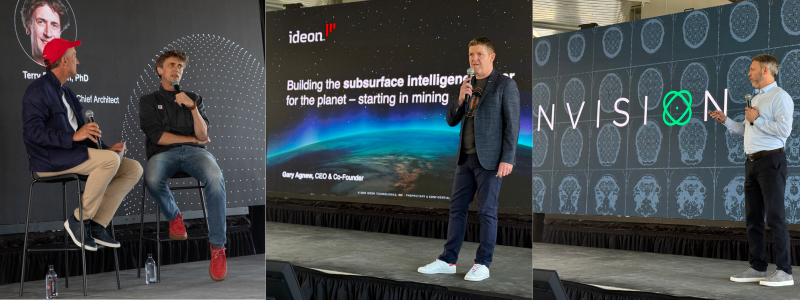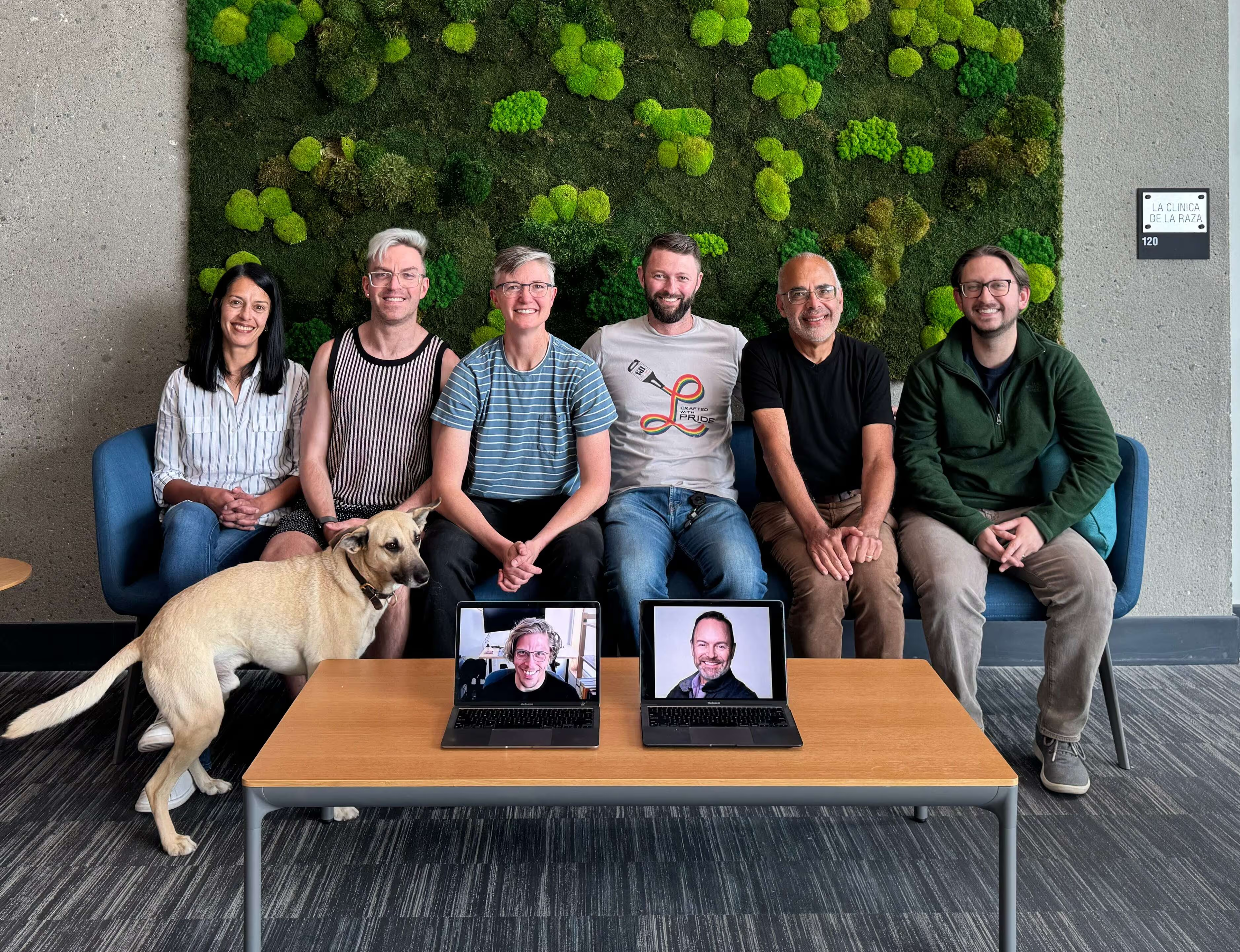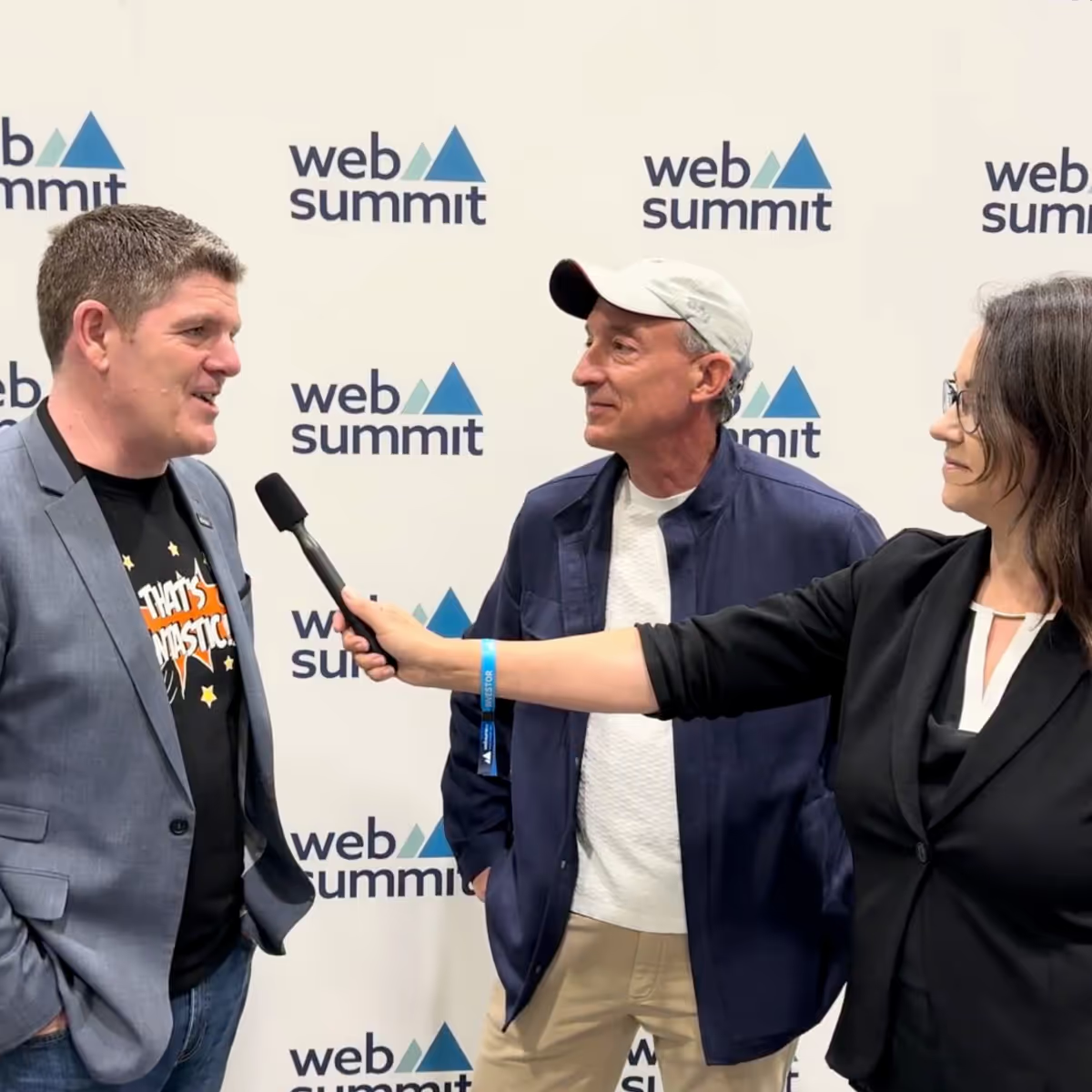At Deep Tech Week San Francisco this summer, three leaders from companies at the frontier of quantum technology—PsiQuantum, Ideon Technologies, and NVision—shared their visions for the future on-stage at the Playground Next-Gen Compute event. From a new approach to medical imaging to a novel method for mapping the Earth's subsurface, they illustrated how quantum information science is moving from the lab into real-world applications. Together, their stories underscore a common theme: a fundamental redesigning of how we acquire and process information is beginning to reveal solutions to some of humanity’s most pressing challenges.
Building the First Useful Quantum Computer: PsiQuantum's Bold Bet
The Quantum Talks began with a fireside chat between Bruce Leak, general partner of Playground Global and Dr. Terry Rudolph, chief architect and co-founder of PsiQuantum, a company building a universal, fault-tolerant quantum computer.
Rudolph's journey into quantum physics began as an "arrogant 17-year-old" who chose math and physics to prove his intelligence. His academic path solidified after a professor explained Bell's Theorem, a concept so enthralling that he was compelled to pursue a career in quantum physics. He later left a tenured professorship to co-found PsiQuantum, a decision he credits to the need for Silicon Valley’s resources and expertise to make a quantum computer a reality.
PsiQuantum's singular mission is to build the first "useful quantum computer.” For them, a useful quantum computer must solve problems that are impossible for even the most powerful classical computers. This is a stark contrast to companies that have claimed "quantum supremacy" with machines of around 100 qubits. According to Rudolph, devices like the Google Willow are "at best something like having a calculator when you want a programmable computer" and are "at least 10,000 times too small to do something that we can't do with...impactful problems that we want to solve.” He asserted that a truly useful quantum computer will require a million qubits.
Rudolph highlighted two areas where a useful quantum computer would have the most impact: chemistry and materials science. He used an analogy from his CEO to explain why humanity's understanding in these areas is still in its infancy:
"If you look at this building around us...the amount of energy that was expended in designing these materials...this building didn't grow from a tiny seed...that took the energy of photons...and grow a thousand feet tall...this building's not going to be around in a thousand years like many trees will be. Our understanding of chemistry and biochemistry is so limited."
He argued that AI, while powerful, is still a classical computer and cannot solve certain problems from first principles in the way a quantum computer can. AI is like a "black box" that gives solutions without deep understanding. Rudolph believes a quantum computer is the only tool that can give humanity a "quantum industrial revolution" by helping us deeply understand quantum theory itself.
The central challenge in building a large quantum computer is scalability, as quantum systems tend to become noisy as they get bigger. PsiQuantum's approach, however, uses photons, which do not interact with each other. This allows them to scale up from small systems to large ones more easily by connecting photonic chips with standard optical fiber. Their machines will look like a data center with hundreds of cabinets, but with a large cryoplant that pumps liquid helium to cool some of the chips.
Rudolph believes the goal is achievable, citing their partnership with Global Foundries to use scalable silicon manufacturing processes. He shared that they have already produced "thousands and thousands of wafers of chips and millions of components.” He also offered advice to other deep tech founders, emphasizing the need to be "100% in" on the endeavor and to find VCs who understand the difficulty and are genuinely interested in the science.
The conversation touched on many of the themes discussed in a fireside chat between Playground’s Peter Barrett and PsiQuantum’s Pete Shadbolt at the Playground Annual General Meeting as well as at a Playground Quantum Ecosystem event, both at Playground in Palo Alto earlier this year.
Unlocking Earth's Subsurface with Cosmic Rays: Ideon Technologies
Gary Agnew, CEO and co-founder of Ideon Technologies, presented a compelling vision for "the subsurface intelligence layer for the planet," with an initial focus on mining. Agnew described a global supply gap of $12 trillion for critical metals like copper, cobalt, and lithium between now and 2050. Despite this immense opportunity, the current supply chain is broken, plagued by low discovery rates, decreasing ore grades, and high energy intensity.
The core problem, according to Agnew, is "geological uncertainty.” He painted a vivid picture of this uncertainty by comparing it to autonomous driving with low-resolution data. Just as a self-driving car can’t make sense of pixelated imaging, mining companies are making "billion dollar decisions" based on low-resolution geophysical data and borehole samples that are "a mile deep but only a pixel wide.” This uncertainty can be the difference between hitting a mineral deposit and flooding a mine.
Ideon’s REVEAL Platform seeks to quantify and reduce this uncertainty by using a unique source of information: cosmic rays from supernova explosions. These cosmic rays interact with the Earth’s upper atmosphere, creating a shower of subatomic particles, one of which is called a muon. As Agnew explained, muons are constantly hitting our heads, and "they each tell a story...about the density of the material they have traveled through".
Ideon deploys quantum sensors deep underground to map the intensity and directionality of these muons. From this data, they generate 2D X-ray-like and 3D CT-scan-like images of the subsurface. This passive, non-invasive technique, which Agnew compares to medical imaging, provides high-resolution data on a massive scale, allowing them to image "hundreds of millions if not billions of cubic meters of earth at any one time". This enables their customers—major mining companies—to make better decisions about where to find, value, and extract critical minerals.
By delivering this high-quality subsurface data, Ideon aims to accelerate "the world's transition to low-impact mining" and provide the metals humanity needs for national and economic security.
Making the "Invisible" Visible: NVision and the Power of Metabolic Imaging
Sella Brosh, CEO of NVision, a quantum sensing company based in Germany, continued the discussion by taking the audience back 100 years to a 1925 paper by Otto Warburg on the metabolism of cancer. Warburg's research revealed that cancer metabolism is "fundamentally different than normal tissues". Cancers, he found, produce large amounts of lactate from sugar even in the presence of abundant oxygen.
This metabolic difference is a goldmine of information for oncology. It could enable earlier cancer diagnosis, determine a tumor's aggressiveness, and reveal whether a treatment is working in a matter of days rather than months. As Brosh explained, "If we had the ability to detect cancer metabolism, we could detect the cancerous cells even before the formation of visible tumors". However, a major hurdle has always been that "metabolism is invisible" to traditional medical imaging. Even the strongest MRI machines in the world, like the international collaboration's new scanner in Paris, cannot detect the signal from sugars, which lies "well below the noise level.”
NVision’s solution doesn't involve building a stronger MRI. Instead, they use quantum dynamics to dramatically enhance the signal of the metabolites themselves. Its Polaris system takes custom-designed sugars and polarizes their nuclear spins, making the magnetic resonance signal "almost a 100,000 times stronger compared to the baseline". This enhancement is so powerful that a few grams of hyperpolarized sugar can produce an MRI signal comparable to that of liters of water in the body, which is what standard MRIs use to create anatomical images.
This groundbreaking technology will allow clinicians to visualize metabolism in real-time, overlaying it onto a standard anatomical MRI image. Brosh shared examples of how this can be applied in the near future:
- Early Diagnosis: The technology can be used for the early diagnosis of pancreatic cancer, where detecting the disease before visible tumors can increase the five-year survival rate from 3% to over 80%.
- Disease Progression: Clinicians could also use it to monitor prostate cancers, helping to identify low-grade tumors that may become aggressive later on.
- Treatment Efficacy: Researchers and clinics could use the metabolic imaging technology to determine if cancer treatments are working in a matter of days, instead of waiting months to see a change in tumor volume.
Brosh concluded by highlighting the scalability of their approach, noting that their system can be attached to any MRI machine worldwide, providing a metabolic imaging solution for a market far larger than the 2,500 PET scanners currently in use. He believes that while cancer is the starting point, metabolism is fundamental to all disease areas, including Alzheimer's, which some call "diabetes type three.”
He shared further insights in a Pop Up Interview during the networking reception that concluded the Playground Next-Gen Compute event at Deep Tech Week SF.


.png)


